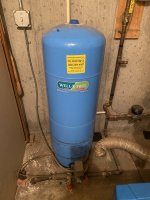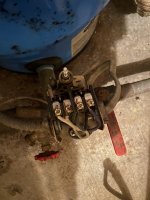BlackDeal
New Member
Hello experts! Looking for some input as I have not been able to find anything similar online.
My well is only used for outside as we connected to town when we moved in. I have no idea how old anything is or the specs on any of it. We moved in in 2016 and the water has always flowed in a wave. The pressure would be at one level for ~30 seconds then drop down for ~30 seconds then back up and so on.
Now the water flows fine for a little then drops to a trickle. It will come back but it happens again. Last night I checked the pressure gauge and it was around 50 psi. I had someone use the hose and it dropped to 0 psi and took minutes to get back up to pressure.
I drained the pressure tank of water and then tested the bladder pressure and it was 0 psi.
Now, I do not know what to do next. I’m confident that I could replace the pressure tank but am not sure if the pump needs to be replaced too.
Should I try replacing the tank and see what happens? Did my explanation narrow down what’s wrong to an expert out there? Should I just call an expert to look at it?
Any input is appreciated
My well is only used for outside as we connected to town when we moved in. I have no idea how old anything is or the specs on any of it. We moved in in 2016 and the water has always flowed in a wave. The pressure would be at one level for ~30 seconds then drop down for ~30 seconds then back up and so on.
Now the water flows fine for a little then drops to a trickle. It will come back but it happens again. Last night I checked the pressure gauge and it was around 50 psi. I had someone use the hose and it dropped to 0 psi and took minutes to get back up to pressure.
I drained the pressure tank of water and then tested the bladder pressure and it was 0 psi.
Now, I do not know what to do next. I’m confident that I could replace the pressure tank but am not sure if the pump needs to be replaced too.
Should I try replacing the tank and see what happens? Did my explanation narrow down what’s wrong to an expert out there? Should I just call an expert to look at it?
Any input is appreciated


